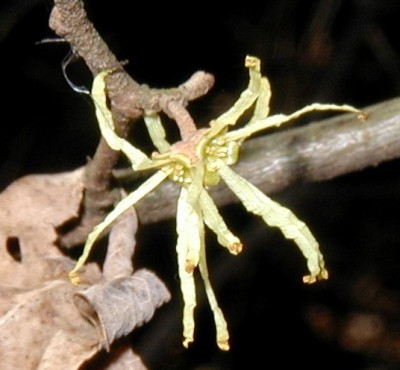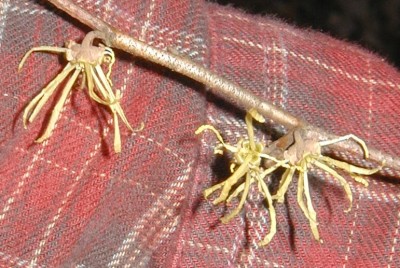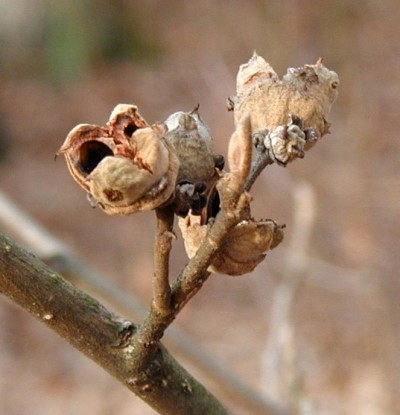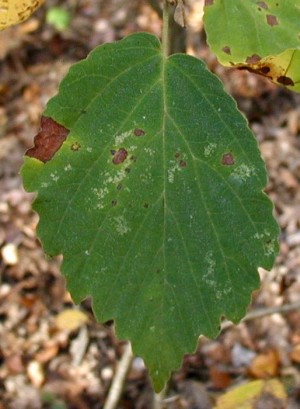Witch Hazel is one of my favorite trees. It has really unique blossoms and fruit, a pretty structure to its limbs, and it can be used medicinally. Due to it’s short stature some will refer to Witch Hazel as a shrub.
Witch hazel, Hamamelis virginiana, is a small understory tree that reaches 15 to 20 feet tall. Its branches spread out in a zig-zag manner so the limbs appear crooked. Several trunks are usually present, so each trunk is at most a few inches across.
In Autumn Witch Hazel is the last tree to bloom in North America. In the middle of October you can find it blooming in Central Pennsylvania.
Witch Hazel’s spider-like yellow flowers have four thin, ribbon-like, inch-long petals and usually occur in groups of three.


Witch Hazel flowers with long, thin, yellow petals. Photos taken 19OCT08.
The fruit is a woody capsule that contains seeds. A young fruit starts out green and then turns brown as it matures. When ripe, the fruit capsule splits open at the top and two shiny black seeds are ejected some distance from the tree. Empty capsules may persist on the small branches for years.

Woody fruit capsules from a prior year.
Leaves are alternate and oval-shaped with a characteristic unevenness at the base. Leaf edges are scalloped and not exactly toothed.

Witch Hazel leaf shape is oval with scalloped edges.
I didn’t know what witch hazel was when I saw it in the drug store for the first time. Right next to the rubbing alcohol there was a bottle of another clear liquid who’s label promised it was an astringent. Witch hazel was slightly more expensive than the familiar alcohol, so I purchased the latter. We always had rubbing alcohol in the bathroom cupboard for cleaning and sterilizing whatever was needed to be clean and sterile.
Witch Hazel has been used medicinally for a long time, especially in the treatment of skin sores, acne, insect bites, and hemorrhoids. Medicinal use takes advantage of antioxidant, astringent, anti-viral and anti-inflammatory properties.
Witch hazel is used in poultice form when the leaves and bark are available, otherwise extracts or hydrosols are available in over-the-counter preparations.
Tea can be made from the leaves and bark and taken internally to stop internal bleeding. Since it does have antioxidant and anti-inflammatory properties, I wonder if Witch Hazel tea can be used effectively by those suffering from Metabolic Syndrome X?
Hey William!
Isn’t it great fun to explore your local area? I was spying on some witch hazels that we have growing in various parts of our woods just yesterday, but no blooming yet. The nuts were quite plentiful this year.
Thanks for letting us know what you’ve seen blooming. Stop by again!